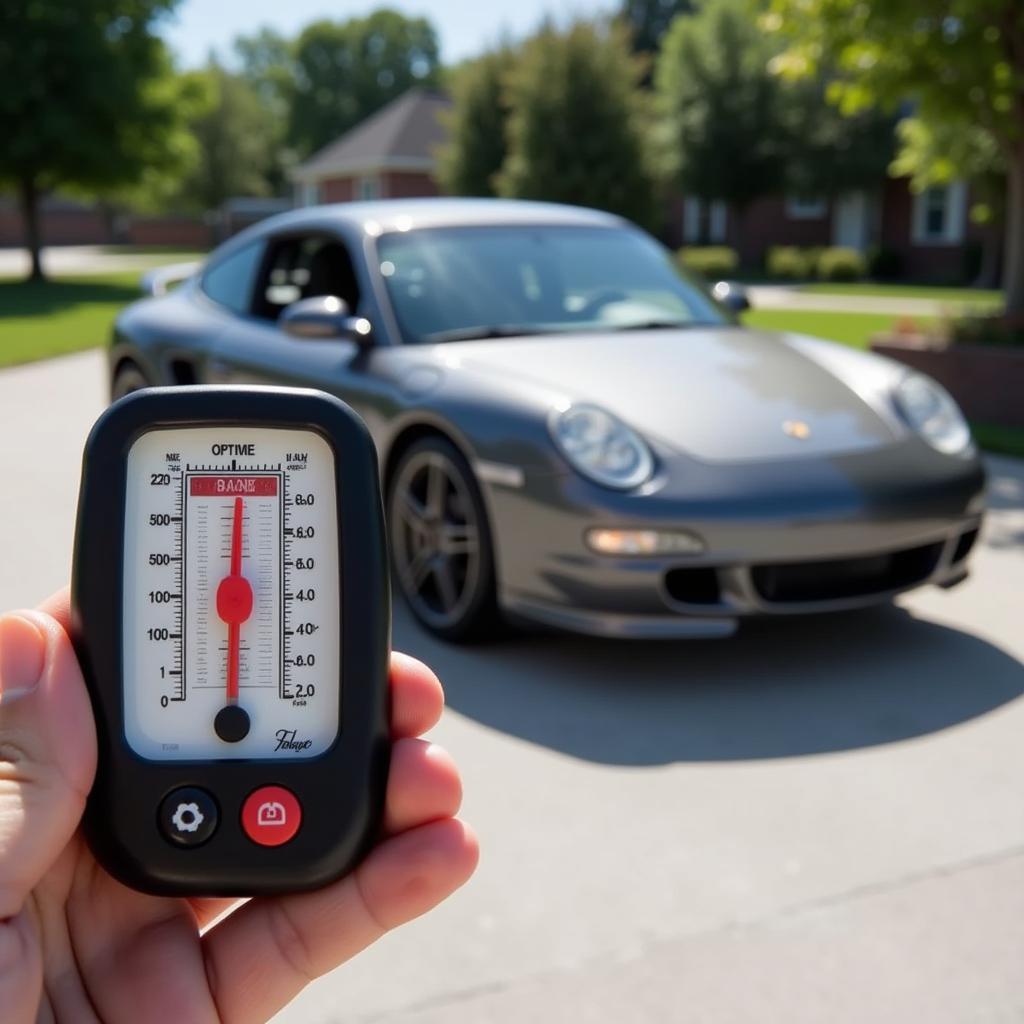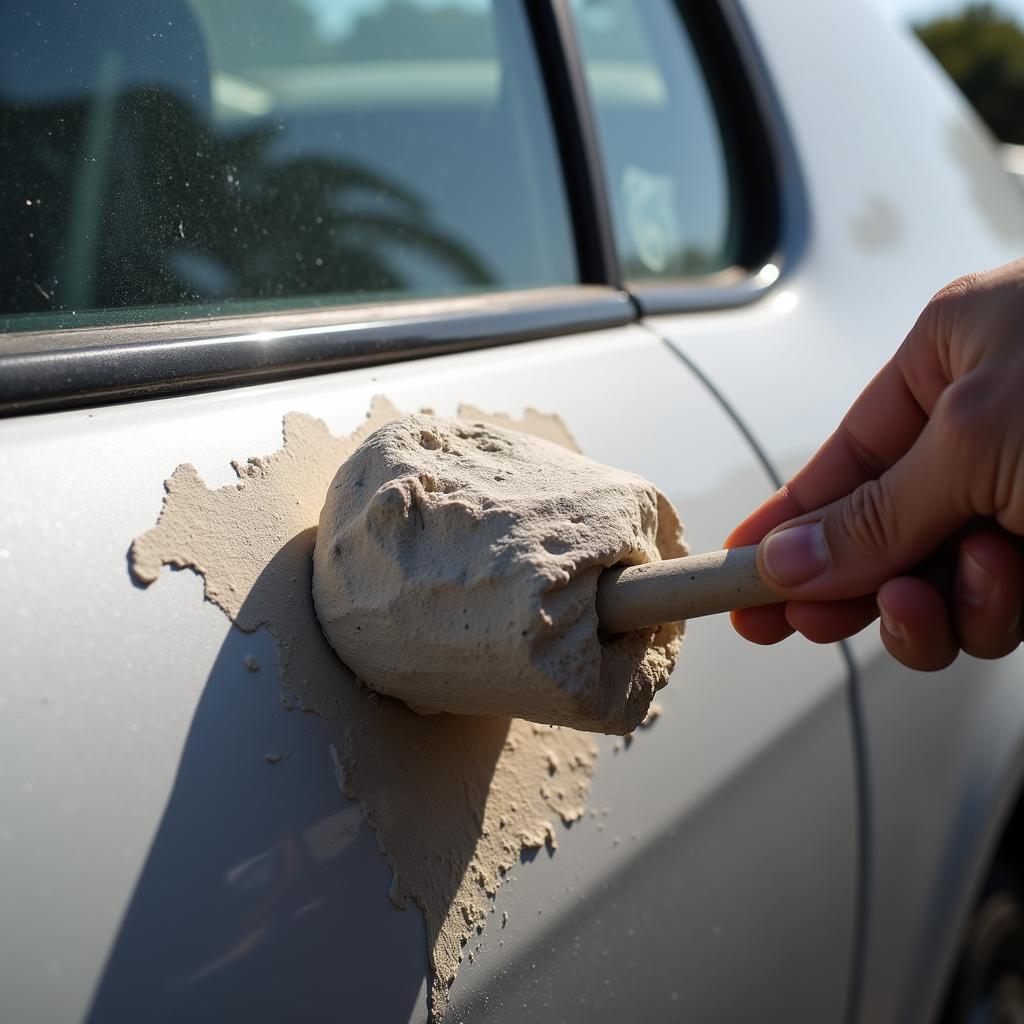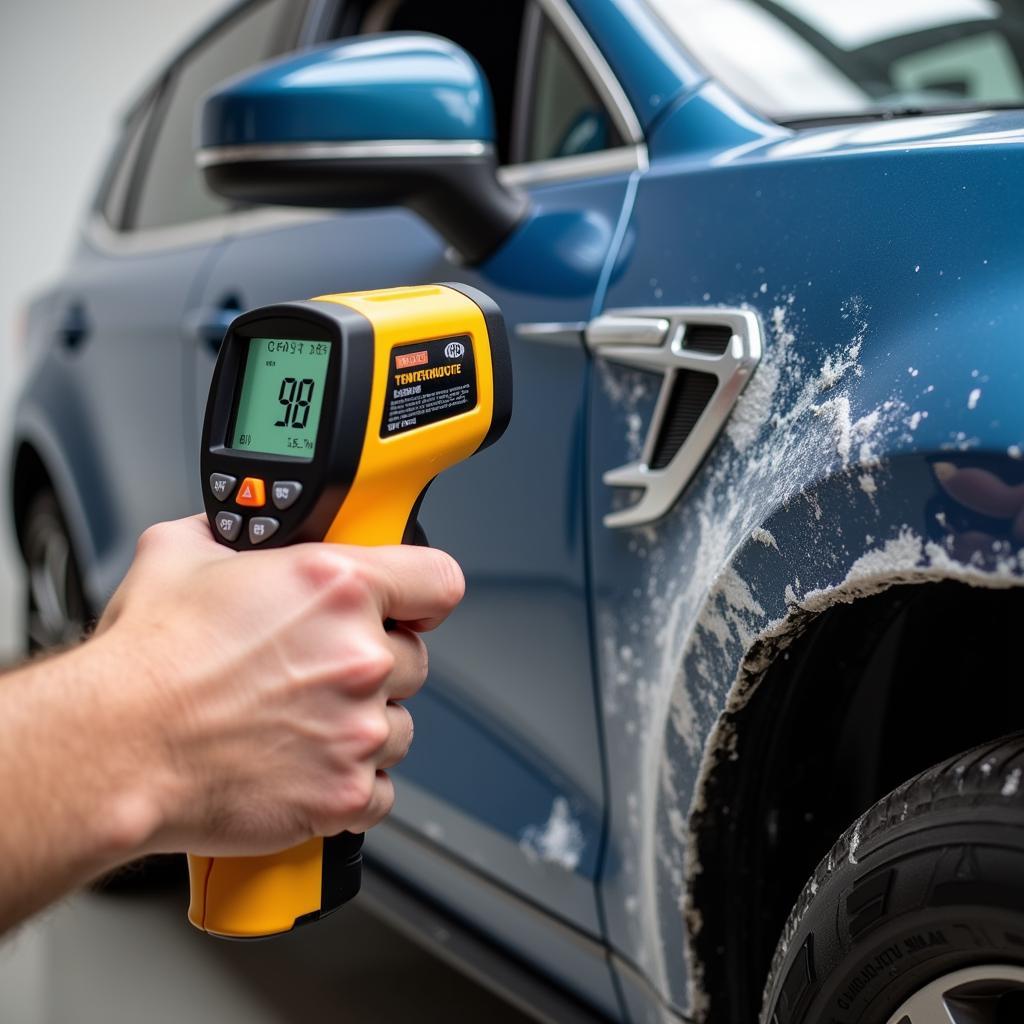Claying your car is a crucial step in achieving a truly flawless finish. But did you know temperature plays a significant role in the effectiveness and safety of this process? Knowing the ideal What Temperature To Clay Car Detailing can make all the difference between a showroom shine and a detailing disaster.
Understanding the Importance of Temperature in Clay Bar Detailing
Claying removes embedded contaminants like industrial fallout, tree sap, and brake dust that washing alone can’t tackle. The clay bar acts like a magnet, grabbing these particles and lifting them away. However, this process relies on the clay’s pliability. Incorrect temperatures can render the clay too hard or too soft, impacting its effectiveness and potentially harming your car’s paint.
Why Temperature Matters When Claying a Car
Extreme temperatures can drastically affect the clay bar’s consistency. Too cold, and the clay becomes stiff and difficult to work with, increasing the risk of marring the paint. Too hot, and the clay can become overly sticky, leaving residue or even melting onto the surface. Finding that sweet spot is vital for a successful clay bar treatment. You might find yourself burning some calories while detailing your car, especially in warmer temperatures. Learn how many calories burned detailing car.
 Ideal Clay Bar Temperature
Ideal Clay Bar Temperature
The Ideal Temperature Range for Claying Your Car
So, what’s the magic number? The optimal temperature range for claying your car is generally between 60°F and 80°F (15°C and 27°C). Within this range, the clay bar maintains its ideal pliability, gliding smoothly across the paint surface and effectively lifting contaminants without causing damage. This ensures the best possible results and minimizes the risk of any issues. Car detailing isn’t just a summer job. Find out what do car detailers do in the winter to keep their businesses thriving.
What Happens If It’s Too Cold to Clay Bar?
If the temperature dips below 60°F (15°C), the clay bar hardens, making it difficult to manipulate and prone to scratching the paint. Forcing a hard clay bar across the paint can create micro-marring and compromise the finish. Warming the clay or the car’s surface can help mitigate this issue.
Can You Clay Bar a Car in the Sun?
Direct sunlight can rapidly heat the car’s surface, particularly darker colored vehicles, exceeding the ideal temperature range. This can make the clay excessively sticky, leaving residue and potentially damaging the paint. Avoid claying in direct sunlight. Always work in a shaded area or indoors. Knowing what do car detailers use to clean interior windows can also enhance your detailing skills.
 Claying a Car in the Sun
Claying a Car in the Sun
Tips for Claying Your Car in Different Temperatures
Here are some expert tips for achieving optimal results regardless of the weather:
- Cold Weather: Warm the clay bar in your pocket or use a heat gun on a low setting to soften it. Consider warming the car in a garage.
- Hot Weather: Work in a shaded area and keep the car’s surface cool by frequently misting it with a detailing spray. Claying your car is not restricted to a specific location. Discover the techniques on how to detail a car in los angeles.
How to Check the Temperature of Your Car’s Surface
A simple infrared thermometer can accurately measure the car’s surface temperature, ensuring you’re within the optimal range for claying.
“Temperature plays a critical role in successful detailing,” says renowned detailing expert, David Miller. “Paying attention to the temperature and adjusting your technique accordingly will prevent damage and ensure a flawless finish.” Keeping your microfiber towels clean is essential for effective car detailing. Learn the best methods for how to wash microfiber towels for car detailing.
 Checking Car Temperature
Checking Car Temperature
Conclusion
Understanding what temperature to clay car detailing is essential for a successful and safe detailing experience. By following these guidelines and paying attention to the temperature, you can ensure a smooth, contaminant-free surface and achieve a stunning finish that will turn heads.
FAQ:
- What is claying a car?
- Why is temperature important for claying?
- What is the ideal temperature for claying a car?
- Can I clay bar my car in the sun?
- What happens if I clay bar my car when it’s too cold?
- How do I warm up a clay bar?
- How can I keep my car cool while claying in hot weather?
Common Scenarios:
- Scenario 1: Claying on a hot summer day. Solution: Work in the shade and frequently mist the car’s surface with a detailing spray.
- Scenario 2: Claying in cold weather. Solution: Warm the clay bar and consider warming the car in a garage.
Further Reading: For more information on car detailing, check out our articles on maintaining your car’s interior and exterior.
Need assistance with your car detailing needs? Contact us via WhatsApp: +1(641)206-8880, or Email: [email protected]. Our 24/7 customer support team is ready to help.

Leave a Reply